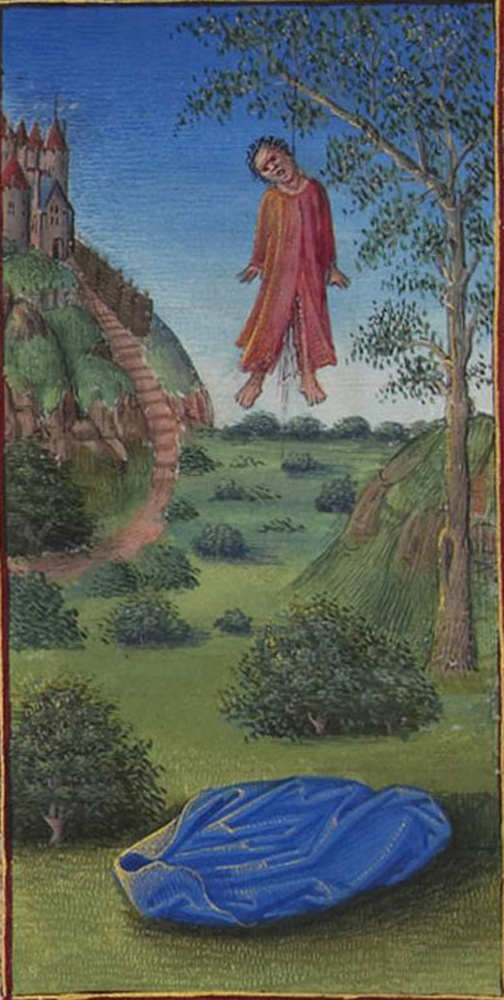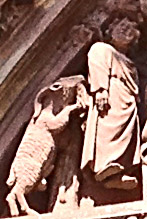One such episode is Mary Magdalene's washing the feet of Jesus with costly oil, when Judas objected to the expense. One relief of this episode has him pointing his finger accusingly at the woman.
Some images of the Last Supper dramatize the passage from John 13:21-30 in which Jesus tells the Apostles that one of them will betray him. To John, he adds that it will be the one to whom he hands a piece of bread that has been "dipped" (image). Other Last Supper images follow Matthew 26:23, where Jesus says, "He that dippeth his hand with me in the dish, he shall betray me." This is the case, for example, in the Last Supper in Giotto's Arena Chapel series. In the latter, Judas' halo dramatically fades out as he puts his hand into the dish. Other images will identify him by making him the only one without a halo at all (example). In a few, he can be identified by the moneybag he is holding (example).
According to the synoptic gospels, he has the money because he has already made arrangements with the chief priests.1 We see their meeting pictured sometimes in Passion cycles (example), as well as the later meeting in which Judas tries to return the money (example).
After the Last Supper Jesus goes to the Garden of Gethsemane, whither Judas leads the chief priests' men to arrest him. This episode is covered in my page on the Arrest of Jesus.
Finally, after the chief priests refuse his money Judas sinks into regret and despair and chooses to hang himself (Matthew 27:3-10). His death can be pictured singly as one lonely act (as at right) or made incidental to the death of Jesus (example).
Prepared in 2014 by Richard Stracke, Emeritus Professor of English, Augusta University
HOME PAGE

From the Très Riches Heures du Duc de Berry (See the description page)

Judas hangs beside a climbing he-goat in this detail from a tympanum depicting Christ's death and resurrection. (See the full tympanum on the description page.)
MORE IMAGES
- 11th century: On the right side of the "Latin Diptych" in the museum of Milan's cathedral two images picture the chief priests refusing the thirty pieces of silver and Judas subsequently hanging himself.
- 6th century: In a miniature in the Rossano Gospels Judas flings the silver coins at the feet of the priests and elders.
ALSO SEE
- The Golden Legend's chapter on St. Matthias, who succeeded Judas as a member of the Twelve.
- The Last Supper
- The Arrest of Jesus
NOTES
1 Matthew 26:15-16, Mark 14:10-11, and Luke 22:3-6.